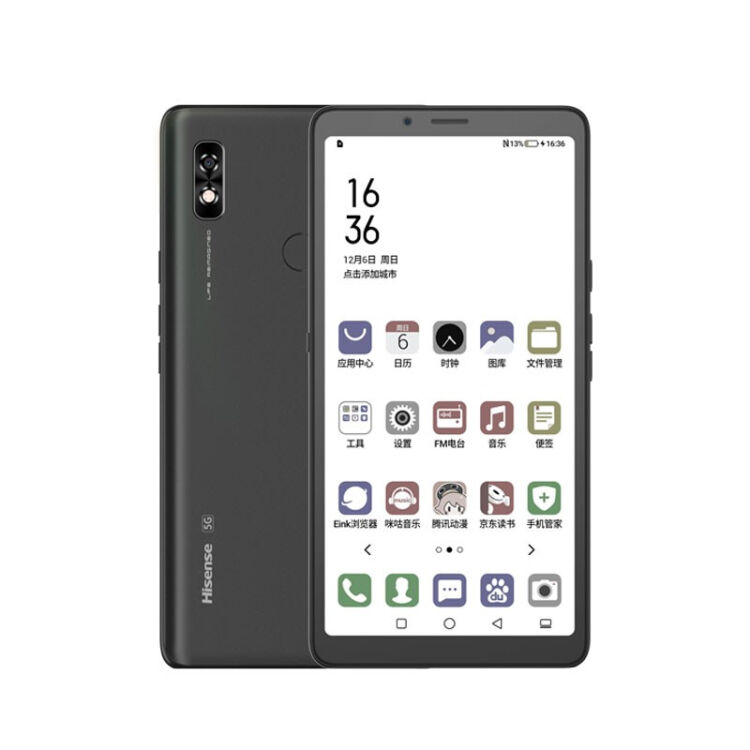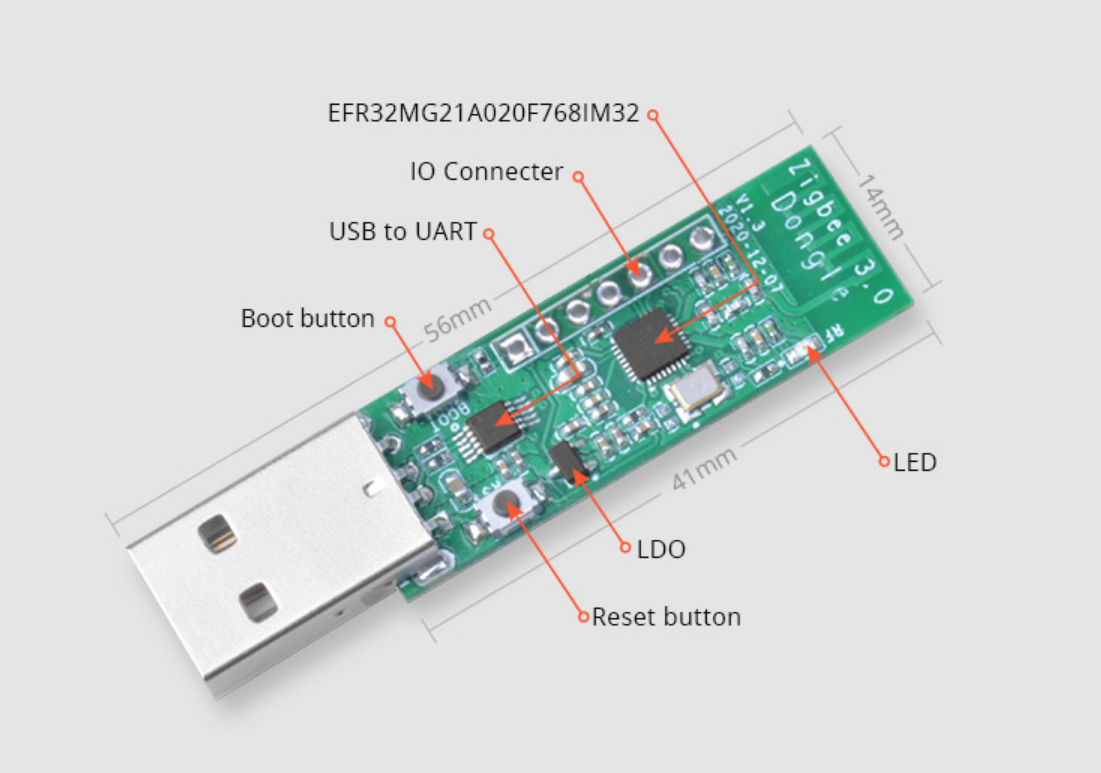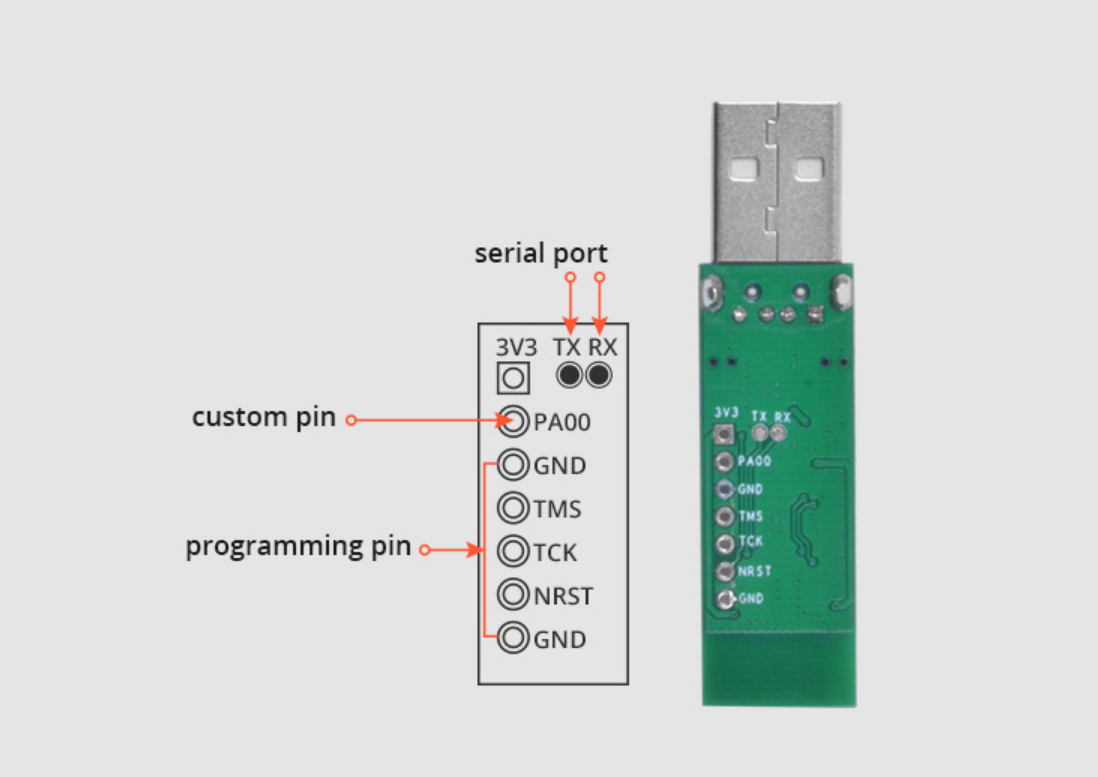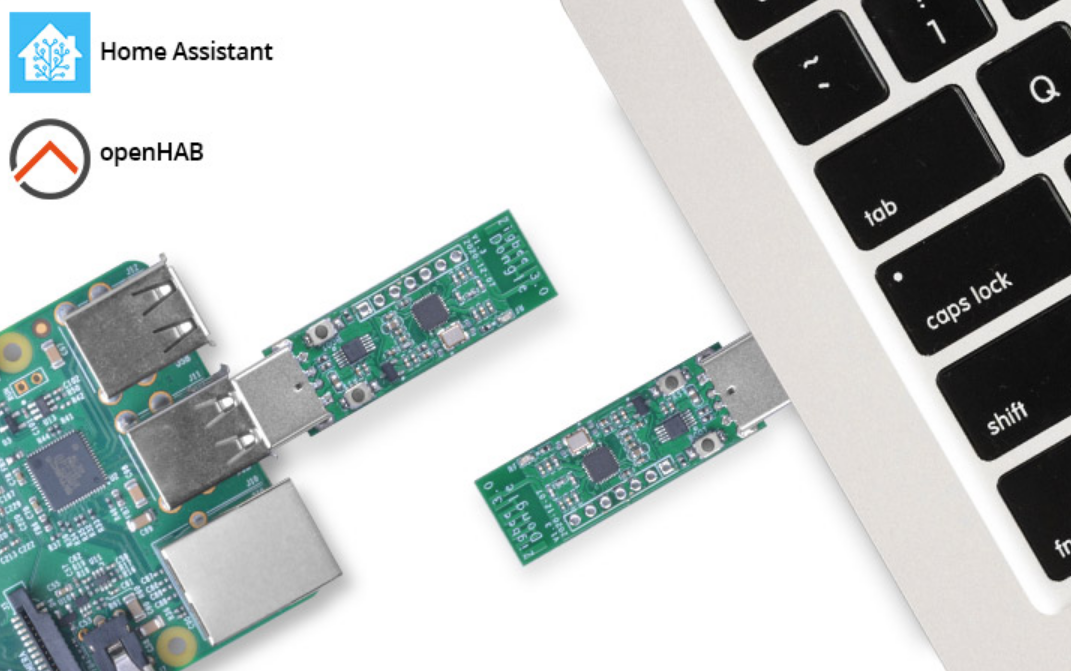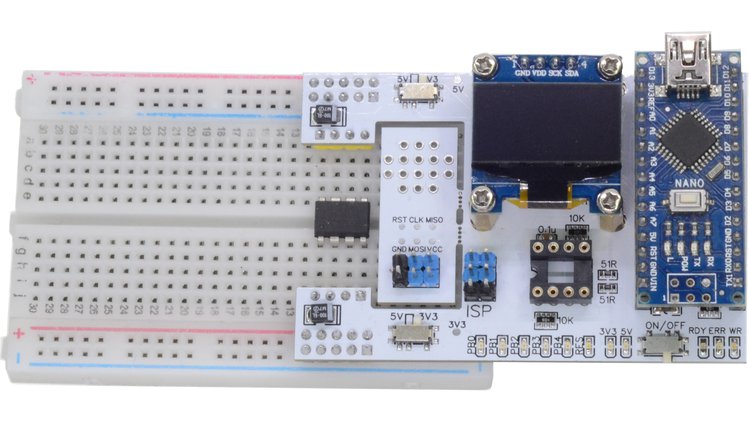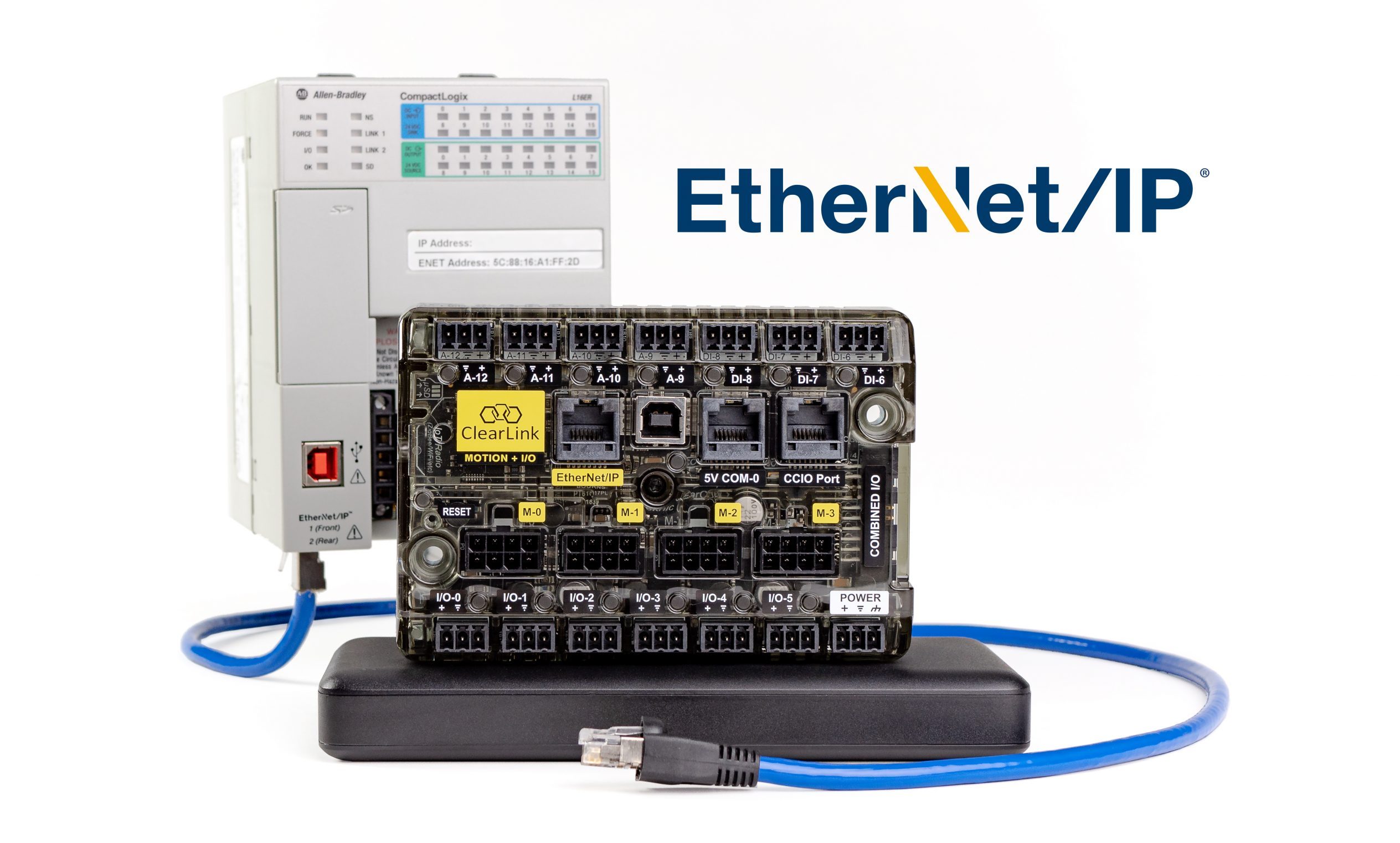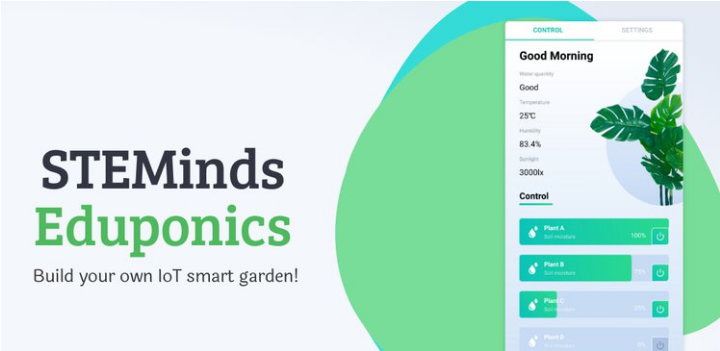
STEMinds have posted details on Crowdsupply about the Eduponics Mini. The STEMinds Eduponics Mini is a smart-agriculture and IoT board that features an ESP32 module. The Eduponics Mini features an array of built-in sensors—including temperature, humidity, barometric, ambient light, water quantity, and soil moisture sensors – that function together to enable smart agriculture easy and affordable. It features Wi-Fi and Bluetooth connectivity, with little power consumption, making it perfect for real-world IoT applications.
Speaking about the board, the company says:
”We believe that high-quality industrial-IoT and smart-agriculture technology should be accessible to everyone, not just to those with significant resources and technical expertise. Using MicroPython or Arduino IDE, you can design your smart garden in no time. We’ve assembled all of the documentation you will need to guide you, step-by-step, into the world of electronics and programming.”
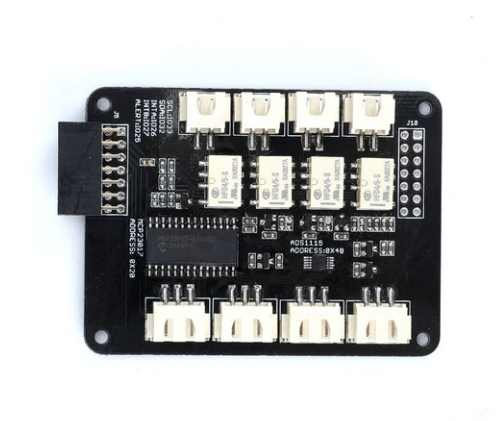
Eduponics mini has a vast application in our daily lives and is accessible not just to the professionals or those with significant resources but to everyone. Amongst the applications are the following :
- An IoT weather station
- Hydroponics and aquaponics(using external sensors)
- A smart aquarium
- Environmental monitoring and data-driven irrigation projects
- Plant growth and disease forecasts based on research
- The development of the Eduponics mini has sparked the design of a user–friendly app for the system with a public MQTT broker on the backend and a React Native user interface which eliminates the need to set-up and maintain a database. It enables you to execute the following;
- Monitoring and control of a limitless number of Plants
- You can water and monitor your plants remotely, from any location
- You can monitor soil moisture, humidity, temperature, and sunlight exposure.
The Application only supports soil moisture sensors for now, but the addition of hydroponics and even smart-aquarium projects are in the works. Furthermore, A Library has been created to enable modifications to virtually all aspects of the app. With this, Plants can be added, renamed, configure new sensors, and a lot more, it’s available on Android but will soon be integrated into the iOS platform.
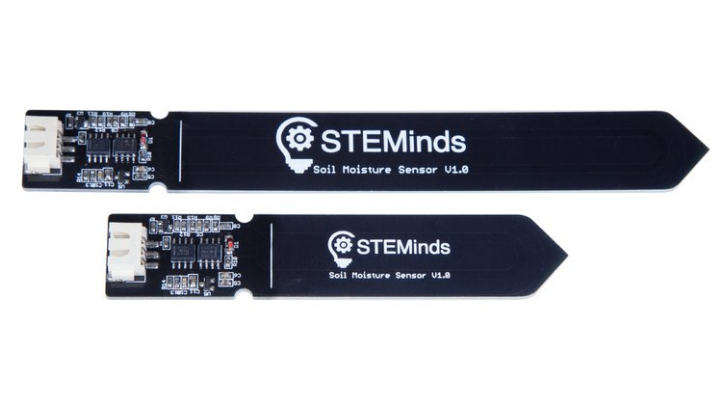
The company has set goals, and one of them is giving us a product of the highest quality, and they have worked very hard taking their time to research the best possible sensor components on the market, the soil moisture sensors are suitable for real-life applications, long-term and will continue operating without supervision. Amongst set goals is the product compatibility with hydroponics and aquaponics, in regards to hydroponics we usually need to use multiple submersible sensors to measure the EC, TDS, ORP, PH and other indicators. These sensors usually are unable to operate at the same time without interfering with one another, but as usual, STEMinds came up with a solution, a solution that is easier and more effective than using relays to turn the sensors on and off. With the development of the Eduponics mini extension board, the analog sensor state can be toggled which allows multiple sensors to operate simultaneously without interference and when the sensors are not in use, no current flows which results in lower power consumption. The entire process is fully automated in the library and requires no additional code.
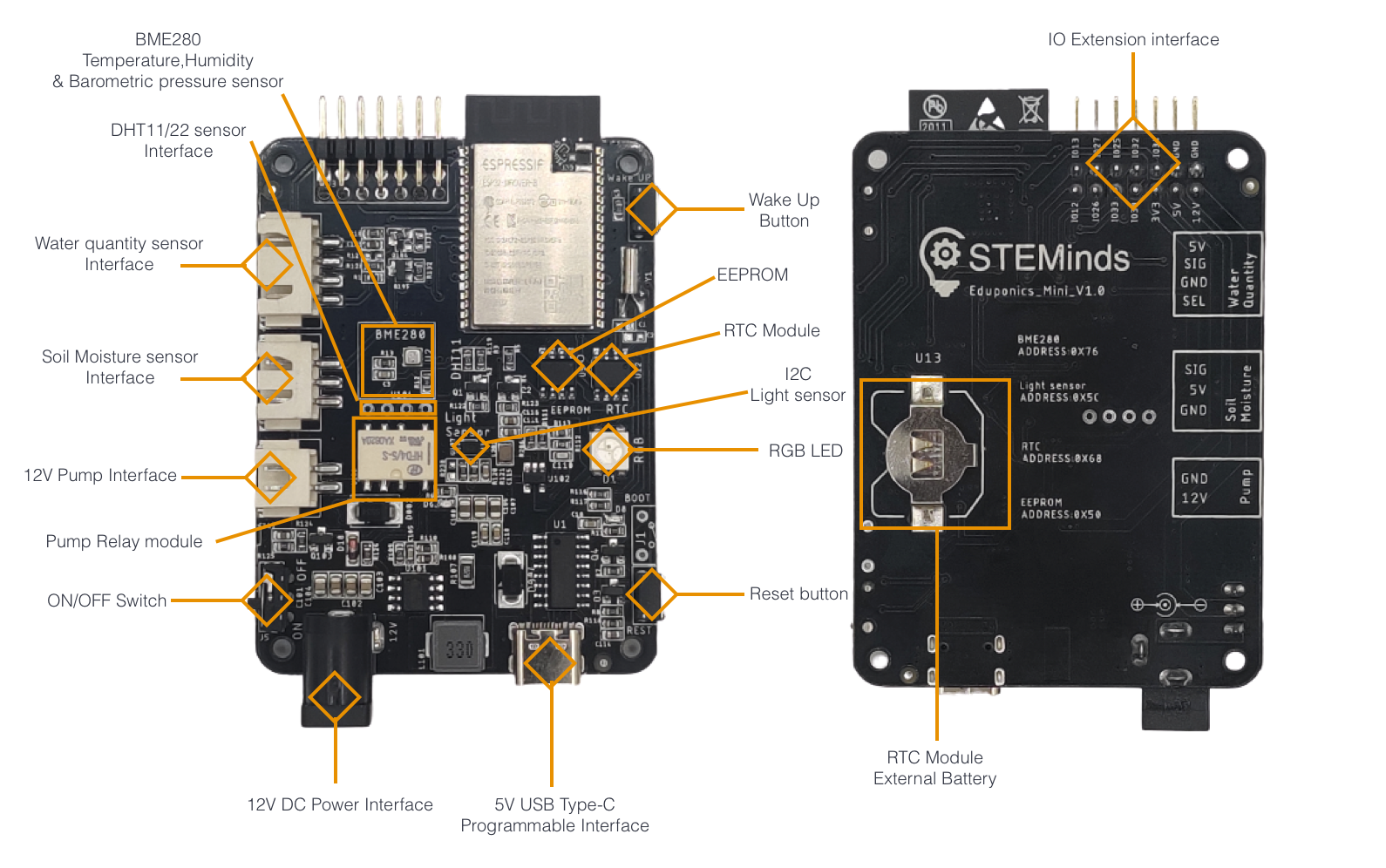
Talking about the idea behind the project, the company says:
“COVID-19 pandemic has been a source of inspiration for this project, the food shortages observed in the early days helped us to search for quick, efficient , at-home techniques for growing our own veggies and greens, studying a few high quality DIY water irrigation systems which includes the necessary control boards, modulus and sensory almost derailed our progress due to the high cost required to use existing solutions identified. Therefore, we decided to think out of the box by designing our smart-agriculture and IoT development kit called EDUPONICS MINI.”
Below are the components of the system :
- Eduponics Mini Board
- One STEMinds soil-moisture sensor (short)
- Contact-less water quantity sensor and two-sided attachment sticker
- Screwdriver for adjusting the potentiometer on the water-quantity sensor
- 12 V submersible water pump
- 12 V / 2 A DC power supply
- USB Type-C data cable
- Water hose for the pump
- Water regulator to regulate the flow
- Integrated ESP32-WROVER module with built-in Wi-Fi and Bluetooth support and an external antenna connector
- Support 5-12 V power input via DC and USB Type-C interfaces
- Compatible with Arduino IDE and MicroPython
- XH2.54 2P Interface for pump, integrated with built-in relay
- XH2.54 3P Interface for soil-moisture sensor (or any other analog or digital device)
- XH2.54 4P Interface for water-quantity sensor
- On/Off and Reset switches and a “wake-up” button to resume from deep-sleep mode
- Integrated I²C RTC DS1307 module (coin-cell battery not included)
- Integrated I²C BH1750 I²C light sensor
- Integrated I²C BME280 temperature, humidity and barometric sensor (3 in 1)
- Integrated I²C AT24C02 EEPROM
- Extension pins for DHT11 / DHT22 sensors (DHT sensor not included)
- IO Extension pins to connect extra sensors with 3.3 – 12 V output pins
- Dimensions: 53 x 71 mm
- Corrosion-resistant, Capacitive soil-moisture sensor
- 5 V operating voltage, 3.3 V output (voltage regulator is built-in)
- Highly accurate and precise
- Short Sensor dimensions: 20 x 102.03 mm
- Long Sensor dimensions: 20 x 155.03 mm.
STEMinds has also developed a custom extension board that includes an extremely accurate ADS1115 ADC and the MCP23017 IO extension, an extra four relays, and an extra four analog inputs that connect directly to the ADS1115 ADC. There will be additional extensions with sensors that monitor things like pH, EC, and water temperature.
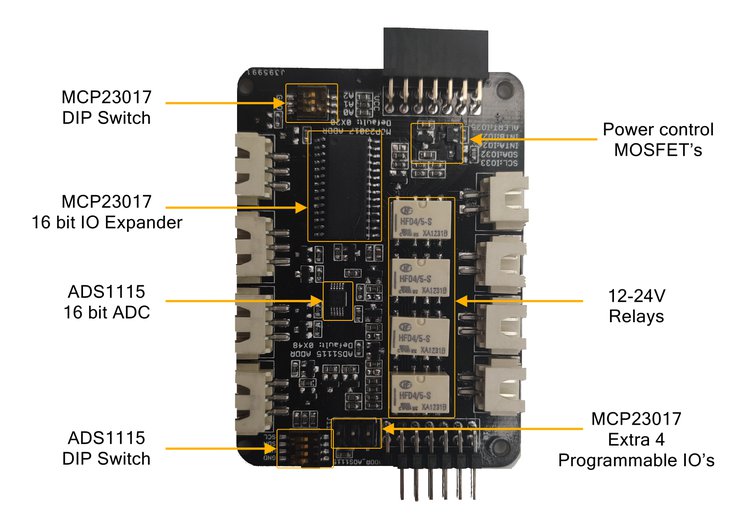
Features of the board includes:
- ADS1115 ADC chipset for precise analog data reading
- MCP23017 IO chipset, connected directly to four relays and capable of activating and deactivating ADC sensors
- External interrupt pins on data change for MCP23017
- External interrupt alert on analog data changes for ADS1115
- Four Relay modules with XH2.54 connectors and 5-24 V support
- I²C interface (only two pins required)
- I²C addresses changeable by changing resistors
- Compatible with Arduino, Raspberry Pi, ESP32, and other controllers
- Dimensions: 53 x 71 mm
The company is offering a discounted price of $59 for the full Eduponics Mini kit. After the campaign, the price will be increased to $69. The Eduponics Mini Dev Board is currently available for $29, and will increase to $39, and the soil-moisture sensors will increase from $3 to $4 for the short sensor and from $4 to $5 for the long sensor. Note that the Waterproof Soil-Moisture Sensors are limited edition and will not be available after the campaign.
For more information, visit the campaign page on Crowdsupply.


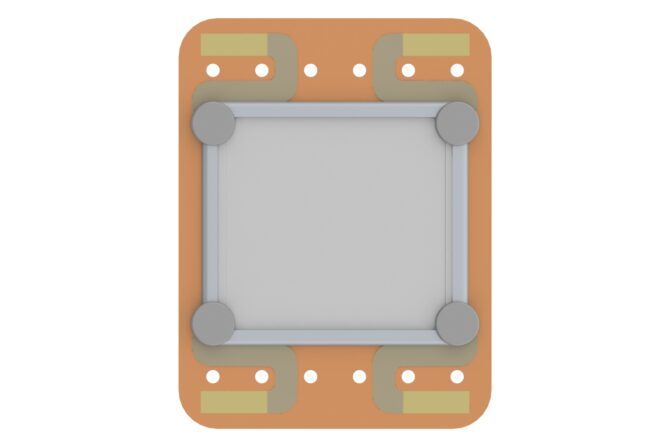
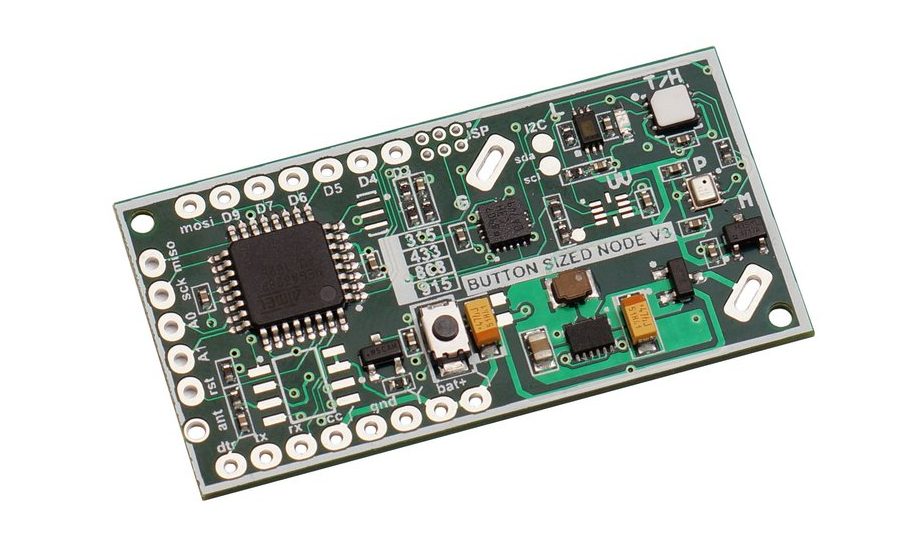
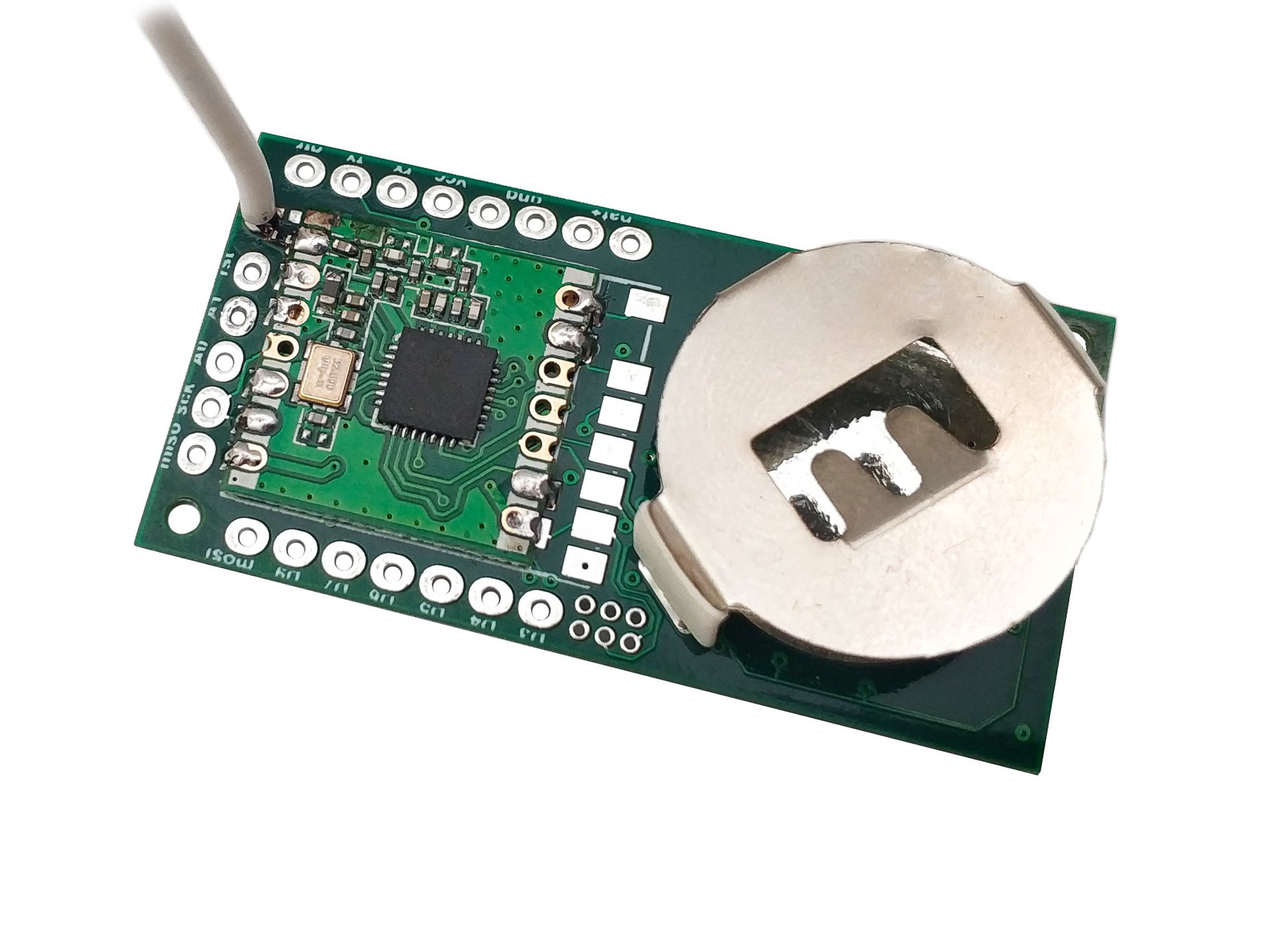





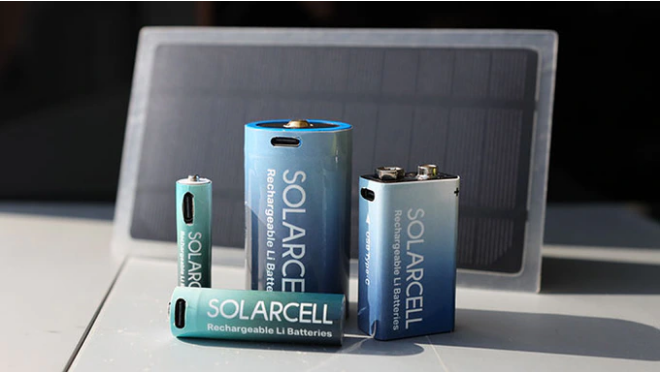
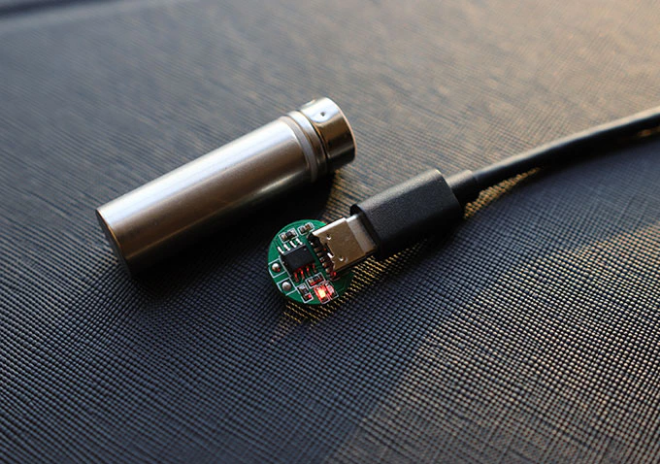
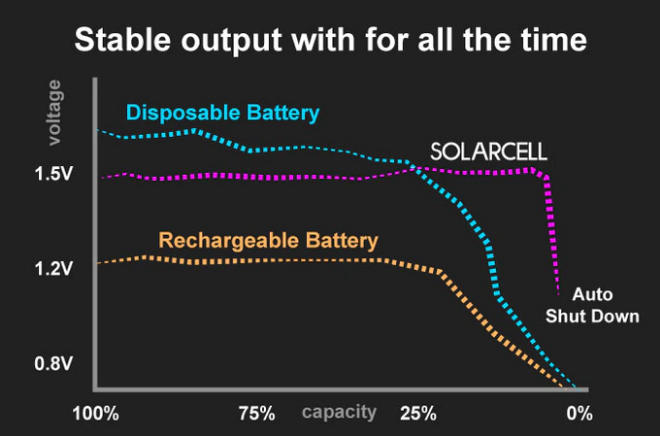
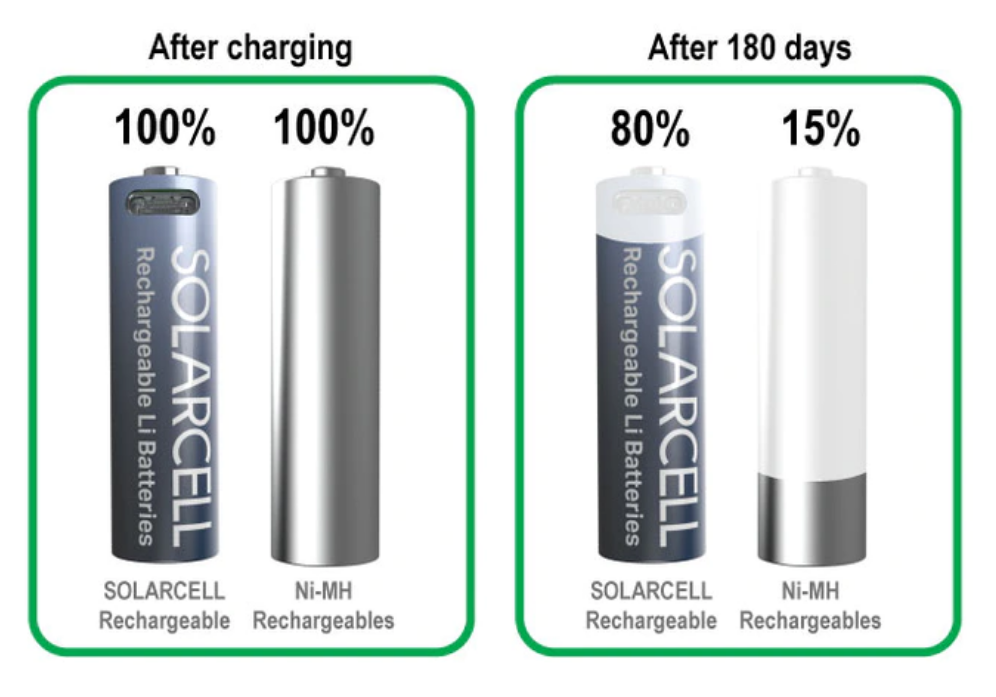
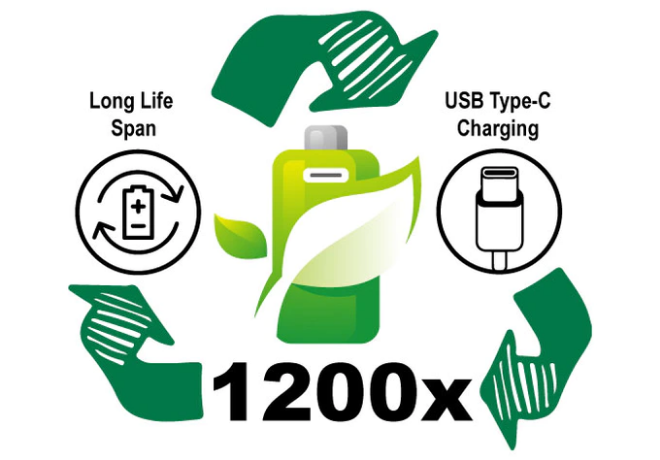

.png)
